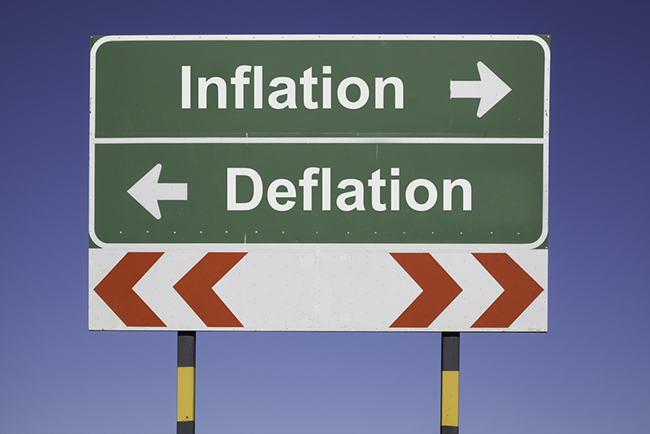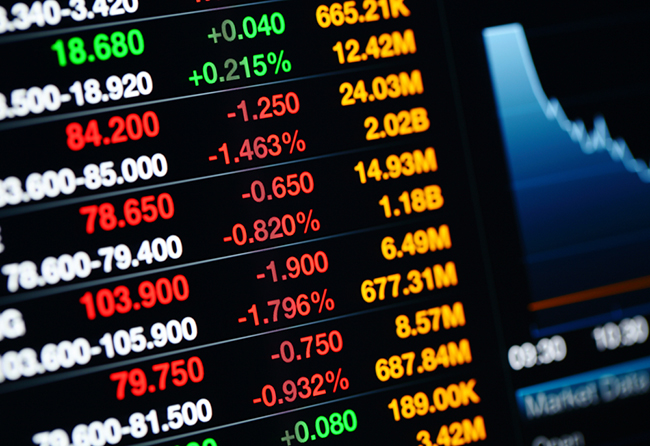Publish date: Mon, 25 May 2020
KUALA LUMPUR: Malaysia is not heading for deflation despite Consumer Price Index (CPI) having deflated further 2.9 per cent to 117.6 points in April from 121.1 in the same month in 2019, the lowest level since 2010, economists said.
Bank Islam Malaysia Bhd chief economist Dr Mohd Afzanizam Abdul Rashid said the core CPI, which removes the volatile items such as fresh food and administered prices, had been recording positive growth of 1.3 per cent for the past three months now.
"Therefore, it is not deflation since the primary driver for the decline in headline CPI was due to fuel prices and electricity charges whereby both sub indices have declined by 38.2 per cent and 33.3 per cent respectively during April.
"I do not think deflation is going to happen in a truer sense. We can see food prices are still at elevated levels. Some items have been reporting quite substantial increment," he told the New Straits Times.
Afzanizam said besides that, the country had been recording trade deficits in food items.
He expects food prices to stay high with the ringgit continuing to be weak.
He said in 2019, Malaysia had recorded a trade deficit in food items of RM17.4 billion. The deficit has remained since 1990.
He noted that the country's Self Sufficiency Ratio (SSR) for rice, beef and chilli had stood at 70 per cent, 25.5 per cent and 38.8 per cent respectively in 2017.
"This would mean Malaysia has been relying from import source in order to satisfy its local demand," he said.
Putra Business School associate professor Dr Ahmed Razman Abdul Latif said he did not foresee the country heading towards deflation as the lower CPI was caused mainly by the decrease of global crude oil price for the past few months.
He said this had in effect reduced the costs of transportation and fuels.
He said, however, prices of global crude benchmarks such as Brent had steadily increased for the past few weeks towards US$35 per barrel which will stabilise the CPI movement.
"In addition, the price of food and beverages has increased steadily and this will also ensure that the CPI will not go towards negative number," he said.
RAM Ratings expects a deflationary trend in the second and third quarters of this year.
The firm revised its headline inflation projection for 2020, from 0.7 per cent to 0.0 per cent.
This is mainly due to weak global oil prices, generous discounts for household electricity bills, and subdued demand.
"While inflation remained stable at 1.5 per cent in January-February, it is expected to ease to -0.2 per cent in March," it added.
https://www.nst.com.my/business/2020/05/595198/malaysia-not-heading-deflation-economists
Comments:
KUALA LUMPUR: Malaysia is not heading for deflation despite Consumer Price Index (CPI) having deflated further 2.9 per cent to 117.6 points in April from 121.1 in the same month in 2019, the lowest level since 2010, economists said.
Bank Islam Malaysia Bhd chief economist Dr Mohd Afzanizam Abdul Rashid said the core CPI, which removes the volatile items such as fresh food and administered prices, had been recording positive growth of 1.3 per cent for the past three months now.
"Therefore, it is not deflation since the primary driver for the decline in headline CPI was due to fuel prices and electricity charges whereby both sub indices have declined by 38.2 per cent and 33.3 per cent respectively during April.
"I do not think deflation is going to happen in a truer sense. We can see food prices are still at elevated levels. Some items have been reporting quite substantial increment," he told the New Straits Times.
Afzanizam said besides that, the country had been recording trade deficits in food items.
He expects food prices to stay high with the ringgit continuing to be weak.
He said in 2019, Malaysia had recorded a trade deficit in food items of RM17.4 billion. The deficit has remained since 1990.
He noted that the country's Self Sufficiency Ratio (SSR) for rice, beef and chilli had stood at 70 per cent, 25.5 per cent and 38.8 per cent respectively in 2017.
"This would mean Malaysia has been relying from import source in order to satisfy its local demand," he said.
Putra Business School associate professor Dr Ahmed Razman Abdul Latif said he did not foresee the country heading towards deflation as the lower CPI was caused mainly by the decrease of global crude oil price for the past few months.
He said this had in effect reduced the costs of transportation and fuels.
He said, however, prices of global crude benchmarks such as Brent had steadily increased for the past few weeks towards US$35 per barrel which will stabilise the CPI movement.
"In addition, the price of food and beverages has increased steadily and this will also ensure that the CPI will not go towards negative number," he said.
RAM Ratings expects a deflationary trend in the second and third quarters of this year.
The firm revised its headline inflation projection for 2020, from 0.7 per cent to 0.0 per cent.
This is mainly due to weak global oil prices, generous discounts for household electricity bills, and subdued demand.
"While inflation remained stable at 1.5 per cent in January-February, it is expected to ease to -0.2 per cent in March," it added.
https://www.nst.com.my/business/2020/05/595198/malaysia-not-heading-deflation-economists
Comments:
What makes deflation such a dreaded condition is that, once it takes hold, it motivates consumers to hold back on spending in the expectation that they will be able to buy things at a cheaper price later. This causes further drop in demand today, leading to more cutbacks in production and even slower economic activity, which feeds into more price declines -- a highly destabilizing dynamic.


